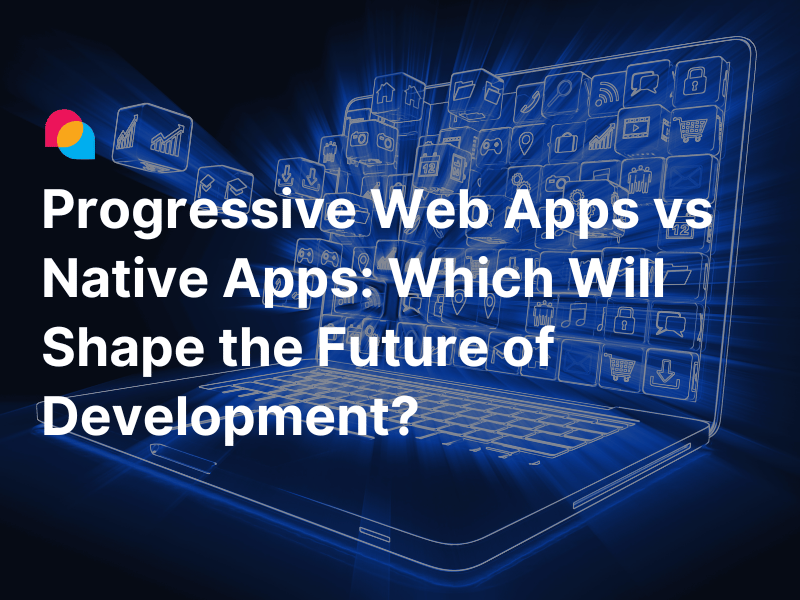There’s a moment every engineering team reaches; usually after the third or fourth unexpected outage; where someone says, “We might need to rethink how this thing is built.”
It’s not about the features anymore. It’s about how the system holds up under pressure. Whether it scales. Whether it breaks gracefully; or all at once. That’s where architecture steps in.
In a world where cloud deployments are the norm and release cycles feel more like sprints than marathons, choosing between microservices and monolithic architecture is no longer a niche technical decision. It shapes how you deliver software, how fast you can adapt, and how confidently you grow.
Let’s take a closer look at both; and why the choice matters more than ever.
What Does Monolithic Really Mean?
When we say monolithic, we mean an application that’s built and deployed as a single unit. One codebase. One build. One deployment process.
Everything; frontend, backend logic, database interactions, background jobs; it’s all tied together in one tightly-knit package. If you want to make a small change to the login flow, you’re potentially rebuilding and deploying the entire application.
This approach is tried and true. It’s how many early software systems were built. Some still run that way; and do just fine.
Why Teams Still Use Monoliths
- They’re easy to start. If you’re building a prototype or MVP, a monolith helps you move fast. No need to manage ten different services when all you need is one working product.
- You can debug without a detective hat. Everything’s in one place, which means no chasing logs across services.
- One deployment process. You build, you test, you ship. Done.
But monoliths aren’t magic. Over time, they come with their own set of headaches.
Where They Start to Struggle
- Scaling becomes wasteful. If one feature; say, your reporting dashboard; is under heavy load, you still have to scale the entire system.
- Everything is tightly coupled. A small change in the billing logic might unexpectedly break the search page.
- One bug can take down everything. Because the app is deployed as a unit, a single failure point can bring it all to a halt.
Monoliths are great for moving fast early. But as complexity builds, so does the cost of keeping it all together.
How Microservices Change the Game
Now, picture this instead: every major function in your app; auth, payments, messaging, analytics; lives in its own little bubble. These services communicate through APIs. They have their own codebases, databases, and release cycles.
That’s a microservices architecture.
It’s like breaking up a band into solo artists. Each service performs its own role, can be updated or scaled independently, and doesn’t have to wait on the others to hit the stage.
What Makes Microservices Appealing
- You can scale what matters. If the checkout flow is getting slammed, you scale just that piece; not the entire app.
- Teams ship faster. Each group owns a service. They can build, test, and deploy without waiting on five other teams.
- Failures don’t ripple across the system. If the review service goes down, your customers can still browse and buy.
This model opens a lot of doors. But it’s not all sunshine and Slack emojis.
The Catch with Microservices
- You’ve got more moving parts. Logging, monitoring, deployment; all of it gets more complex.
- Services need to talk, and talk well. APIs need to be versioned, calls need to be resilient, and failures need to be handled smartly.
- It changes how teams work. Autonomy sounds great, but it requires a shift in how responsibility and ownership are handled. Dev and Ops can’t be silos anymore.
So, while microservices give you flexibility, they also raise the bar operationally and culturally.
Side-by-Side: Monolith vs. Microservices
Here’s how they stack up when you lay it all out:
|
Aspect |
Monolith |
Microservices |
|
Setup |
Simple, fast to get started |
Slower to boot up, more infrastructure |
|
Scaling |
Whole app scales together |
Scale only what you need |
|
Deployments |
Single, all-or-nothing |
Independent per service |
|
Team Structure |
Centralized, lower autonomy |
Decentralized, teams own services |
|
Resilience |
Low; failure can take down the system |
High; failures isolated |
|
Debugging |
Easier in one place |
Requires distributed tracing |
When a Monolith Is the Smarter Choice
Let’s be real; not every product needs microservices. In fact, in many cases, starting with a monolith is the better choice.
If you’re:
- Building an MVP
- Working with a small team
- Shipping a focused set of features
Then the simplicity of a monolith will save you time and headaches. You’ll move faster and have fewer things to worry about.
There’s no shame in building something monolithic. The mistake is forcing microservices too early, before you need them; or before you’re ready to support them.
When Microservices Earn Their Place
As your system grows, it naturally becomes harder to manage as a single unit. You’ve got more features, more users, and more developers. That’s when the cracks in a monolith begin to show.
Microservices start to make sense when:
- You’ve got multiple teams working in parallel
- Features need to scale differently (some services are busier than others)
- You need to deploy quickly and independently
Companies like Netflix and Uber didn’t start with microservices. They migrated to them as complexity and scale demanded it.

Transitioning from Monolith to Microservices: What It Actually Looks Like
Deciding to move to microservices is one thing. Actually doing it? That’s where it gets messy. And that’s okay.
No team wakes up and says, “Let’s tear the whole system apart.” It almost always starts with a pain point; a feature that’s becoming impossible to update without breaking five others. Or a service that crashes every time load increases. Or a deployment that takes three hours and still fails half the time.
And when the cost of staying in a monolith outweighs the cost of change, the shift begins.
But the most successful transitions are gradual, not rushed. Let’s walk through how it can work in practice.
Step 1: Identify What Hurts the Most
Start by looking at your current system and asking a few hard questions:
- Which parts of your app change the most?
- What features cause the most bugs or slowdowns?
- Which teams are stepping on each other just to ship a fix?
These problem areas are your candidates for extraction. Don’t try to break out everything at once. Just pick one thing. Something small, but meaningful; like authentication, payments, or notifications.
Step 2: Create Clear Boundaries
Before you write a single line of new code, define the service boundary. Ask:
- What does this service own?
- What inputs does it require?
- What outputs does it produce?
The goal here isn’t just to move code. It’s to decouple responsibilities. Once that’s clear, you can build a lightweight API or message contract around the service, and start separating it from the rest of the system.
Step 3: Build It Alongside the Monolith
Here’s the part many teams miss: you don’t have to kill the monolith overnight.
You can spin up your first microservice and have the monolith talk to it via internal APIs. Let them coexist. This gives you time to test, observe, and fine-tune without putting the whole system at risk.
Once the service is stable, you can begin shifting traffic to it. Slowly at first. And when it holds up, you’ve got your first clean break.
Step 4: Repeat, Carefully
After that first success, it’s tempting to go all-in. But resist the urge to “microservice everything.”
Instead, follow the same measured approach:
- Prioritize based on pain points
- Isolate one piece at a time
- Validate before moving on
Over time, the monolith shrinks. Your team learns what works and what doesn’t. And your architecture evolves in a way that’s controlled, tested, and aligned with your real-world needs; not just theory.
Real-World Stories: What the Shift Looks Like at Scale
Netflix
One of the most well-known success stories. Netflix started as a DVD rental service with a classic monolithic architecture. But as it evolved into a global streaming platform, that monolith buckled under pressure.
They didn’t jump straight to microservices. They started by extracting critical services like account management and video encoding. Today, their system includes hundreds of independently deployable services running on AWS. The migration took years, not months.
Uber
Uber’s original monolithic codebase, affectionately named “Base,” handled everything: ride matching, payments, notifications, and more. But as the company scaled into new markets and verticals, the monolith became a bottleneck.
They transitioned to microservices through a domain-driven approach; aligning services with business logic and regional teams. One key learning: microservices won’t solve your problems unless your teams are ready to own them end to end.
Amazon
Amazon’s early platform was one large monolith; until teams started tripping over each other trying to innovate. The company eventually moved to a service-oriented architecture, with each team owning its service like a “small business.” This mindset is what gave birth to AWS.
They learned that autonomy, APIs, and strong cultural support were as important as code in making microservices work at scale.
Final Thoughts: Make Architecture a Business Decision
There’s no right or wrong architecture; only the one that fits your team, your product, and your stage of growth.
If you’re in the early days, a monolith can give you speed and focus. If you’re scaling fast and need flexibility, microservices offer a path forward.
But remember: architecture isn’t just a technical decision. It shapes how your teams work, how fast you move, and how confidently you can grow.
The best systems aren’t the ones that follow trends. They’re the ones built with purpose.
References:
Rebuilding Netflix Video Processing Pipeline with Microservices, Netflix Technology Blog, 2024





